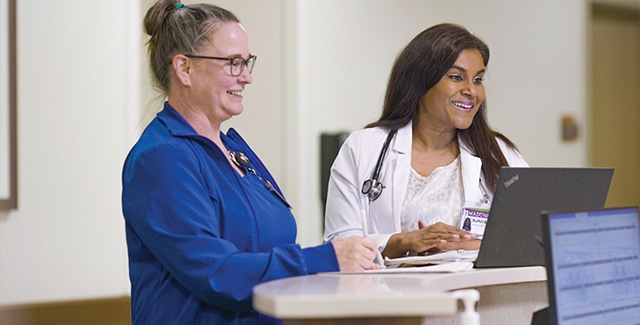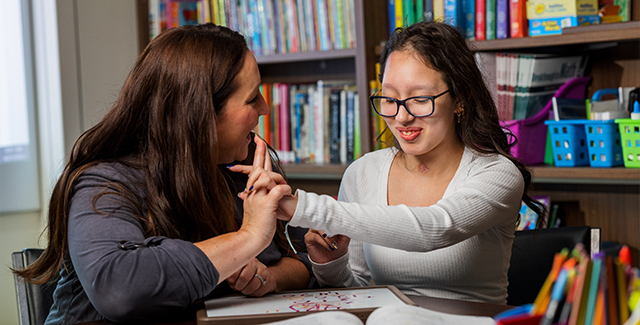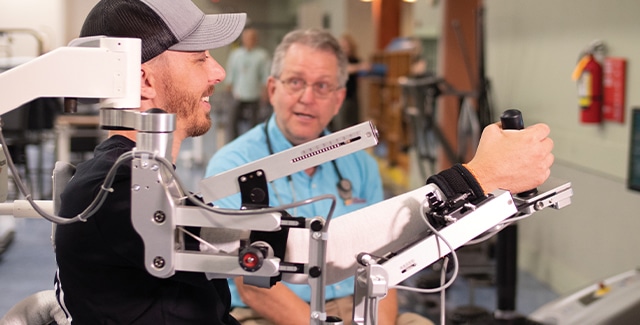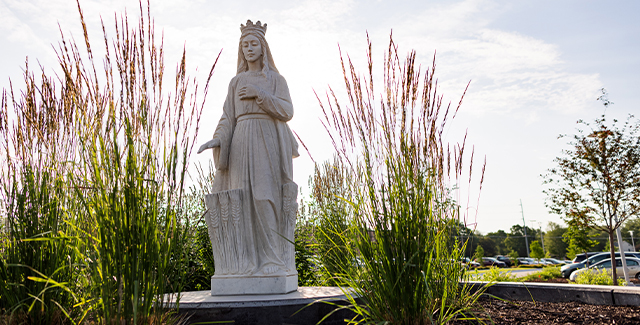Madonna’s Research Institute is reimagining the future of rehabilitation through robotics and artificial intelligence, giving hope to millions of Americans trying to maximize and maintain their mobility after serious injury or illness.
Thanks to a three-year grant from the American Heart Association, Madonna researchers are developing a robotic hip exoskeleton designed to help stroke survivors walk with greater ease and less effort. The project, led by Arash Gonabadi, MS, Ph.D., Director of Rehabilitation Engineering and principal investigator of the study, adapts to each person’s unique needs, offering support that could mean the difference between dependence and renewed independence.
The Institute is also tackling mobility challenges that come with aging. Backed by the Nebraska University system’s NU Collaboration Initiative (NRI), Gonabadi is co-principal investigator on two studies that are exploring how wearable robotics can keep older adults safer and more active.
“We know that one of the cornerstones of healthy aging is remaining physically active. Developing assistive technologies to make movement safer and more comfortable, will make physical activity more accessible as people age; with a goal of improving overall longevity and quality of life.” Gonabadi said.
The first study will compare the effects of hip versus ankle exoskeleton assistance on walking performance, balance, fatigue and user experience in older adults.
The second study builds on efforts to enhance mobility and reduce exertion in older adults using wearable robotics. With this project, the Institute will build and test an AI-driven real-time smart controller for ankle exoskeletons that can adaptively adjust assistance based on each individual’s movement patterns. Using AI algorithms, simulation and human-in-the-loop optimization, the goal is to personalize the assistance for every user, reducing energy costs and improving comfort and effectiveness.
“This work has the potential to transform rehabilitation approaches for aging populations by providing adaptive, patient-specific robotic support that promotes independence and safety,” Gonabadi said.
Gonabadi collaborated with the University of Nebraska Medical Center (UNMC), the University of Nebraska at Omaha (UNO) and the Department of Veterans Affairs (VA) to pursue both studies.
The Institute is currently leveraging AI to predict how much energy people use while walking, comparing those findings to the traditional Multiple Linear Regression (MRL) model. Funding for that study was granted earlier this year and builds on Madonna’s previous research, which also used an artificial neural network (ANN) to predict how much energy we use based on ground reaction forces and joint movements.
From stroke recovery to fall prevention, these projects share a common goal: using leading-edge technology and innovation to restore confidence, movement and quality of life.
Walking into the Future: The Madonna Institute’s innovative mobility research





